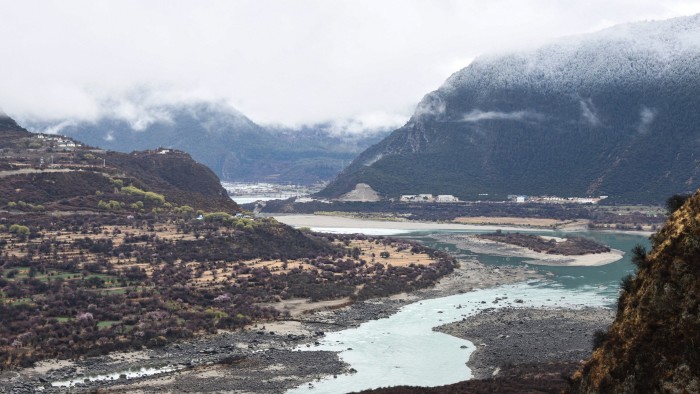Unlock the Editor’s Digest for free
Roula Khalaf, Editor of the FT, selects her favourite stories in this weekly newsletter.
India has voiced concern about Beijing’s plan to build a dam in Tibet that is three times larger than China’s Three Gorges, currently the world’s largest hydropower facility.
The hydropower project in the lower reaches of the Yarlung Tsangpo river, announced last month, is part of a network of dams being built across Tibet as China aims to increase the renewable energy share of its power consumption to 33 per cent this year from 28.8 per cent in 2020.
“It is a mega project with a lot of ecological disturbances and it does not take into account the interests of the lower riparian states,” said Randhir Jaiswal, spokesperson for India’s foreign ministry, this month.
The row comes as the two sides attempt to repair relations following deadly border clashes in 2020. Last October, New Delhi and Beijing reached a deal to resolve a military stand-off and agreed to military patrols along their disputed Himalayan border.
India fears that the dam, located in seismic Tibet, could spur floods and water scarcity downstream, while giving China the upper hand in any potential stand-off between the nuclear-armed neighbours, analysts said.
“There are fears of all kinds,” said Shivshankar Menon, India’s former national security adviser and chair of the Ashoka Centre for China Studies. “The geopolitics don’t help, obviously, because nobody trusts anybody in this.”
Tibet has a third of China’s hydroelectric power potential. The Yarlung Tsangpo — the world’s highest major waterway — is Tibet’s longest river, and is called Brahmaputra in India before it turns into the Jamuna in Bangladesh.
The 60-gigawatt dam on the Tibetan plateau’s rim lies near the border with the Indian state of Arunachal Pradesh, the eastern tip of India over which Beijing claims sovereignty and the two sides fought a war in 1962.
“India and Bangladesh are concerned that the dam would change the river’s natural flow, which could disrupt access to water for agriculture, drinking and other essential human needs,” said Neeraj Singh Manhas, an expert on transboundary rivers and water security in south Asia.
Barry Sautman, a political scientist at the Hong Kong University of Science and Technology, said China could argue, however, that Tibet was not the main source of water for the Brahmaputra. “Somewhere between 7 per cent and 30 per cent of the water comes from Tibet. The rest comes from rainfall [downstream],” said Sautman.
When it formally announced the dam on Christmas Day, Beijing said it would “bring more sense of gain, happiness and security to the people of all ethnic groups in Tibet”.
Chinese officials have dismissed concerns about the impact on environmental or downriver water supplies. “The project will not have a negative impact on the ecological environment, geological conditions and the rights and interests related to water resources of downstream countries,” said China’s foreign ministry’s spokesperson Guo Jiakun.
Activists allege that the 193 hydropower projects built in Tibet since 2000 have led to serious environmental and human rights violations. China’s extensive dam-building projects in Tibet have previously attracted fierce opposition, such as around the Kamtok, or Gangtuo, hydroelectric power plant on the eastern Jinsha river.
“We are anticipating there would be a huge negative impact,” said Malik Fida Khan, executive director of Bangladesh’s Center for Environmental and Geographic Information Services, a government research centre.
India is also planning to build what would be the subcontinent’s largest dam, the Siang Upper Multipurpose Project, with an output capacity of 11GW in Arunachal Pradesh.
Pema Khandu, the chief minister of Arunachal Pradesh, told Indian news agency PTI that this dam was aimed at “mitigating potential flood risks from water releases” because China was “unpredictable and can do anything”.
India’s dam project has also ignited opposition from local populations and concerns in Bangladesh.
Additional reporting by Nian Liu in Beijing, cartography by Steven Bernard and data visualisation by Bob Haslett
Read the full article here

